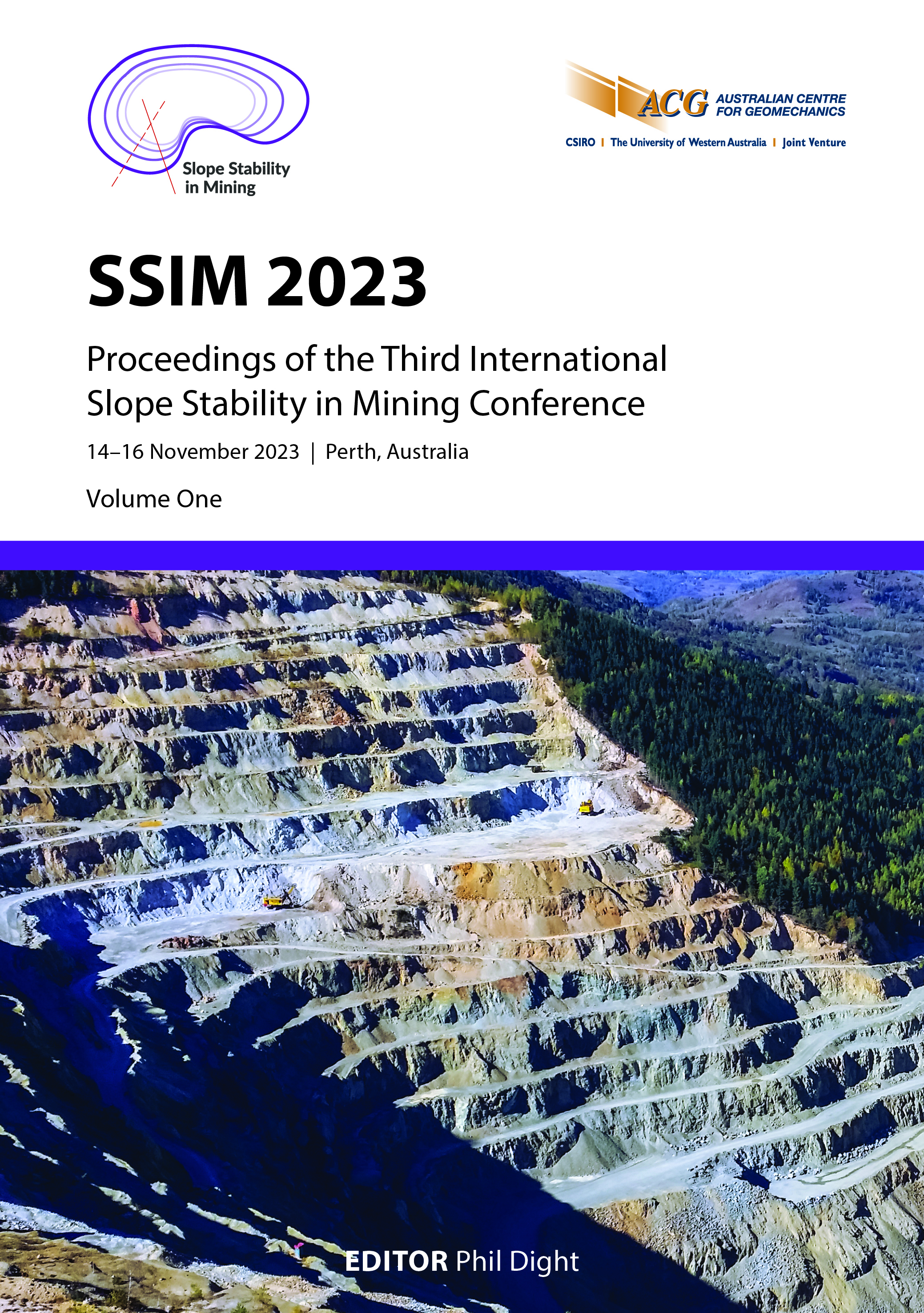Line-of-sight and total vector displacement discussion in slope monitoring: a case study at an open pit mine

|
Authors: Souza, MF; da Costa, TAV; Santos, RG; Gonçalves, DL; Maia, KCAP; Guimarães, FCF |
DOI https://doi.org/10.36487/ACG_repo/2335_59
Cite As:
Souza, MF, da Costa, TAV, Santos, RG, Gonçalves, DL, Maia, KCAP & Guimarães, FCF 2023, 'Line-of-sight and total vector displacement discussion in slope monitoring: a case study at an open pit mine', in PM Dight (ed.), SSIM 2023: Third International Slope Stability in Mining Conference, Australian Centre for Geomechanics, Perth, pp. 853-864, https://doi.org/10.36487/ACG_repo/2335_59
Abstract:
Slope monitoring programs must be designed with the primary purpose of providing safety to personnel and equipment. The failure mechanisms and risk, in terms of the likelihood and consequences of slope movement types, inform the selection of suitable equipment for a reliable monitoring system. The use of ground-based radar (GBR) in open pit mining has affirmed its efficiency in detecting movement and predicting failures with warning, near real-time acquisition and high precision – proving its need in critical cases. GBR is very important to indicate change of behaviour of a geotechnical structure and displacement trends, especially when a prompt response is mandatory, but is limited in interpreting the total vector displacement (direction and magnitude) and support failure mechanism investigation. In addition, the calibration of radar sensitivity to the real movement is necessary to evaluate its efficiency. If a particular area is moving orthogonal to the line-of-sight, the radar will not detect the full magnitude of the movement; consequently, it is not sufficient on its own to ensure adequate data collection for alarming purposes. The total station combines measurements of the horizontal and vertical angles, and distances of the equipment to the monitored targets (prisms), to track displacement in 3D space. Collection of data over time provides the change in the position of the prisms, which is used to calculate and understand the displacement vector at slope walls and interpret failure mechanisms. Other than providing a vector of movement, robotic total stations (RTS) operating on a 24/7 mode validate the measurement data of other systems such as GBRs, and tracks wall displacement trends efficiently. This article presents a real slope movement situation that was monitored with an RTS and a GBR installed at the same location and monitoring the same target. Interpretation and discussion of the output data, sensitivity calculation to the real movement, particularities and benefits of both technologies is provided, as well as the application in this case study.
Keywords: slope monitoring, line-of-sight, total vector displacement, ground-based radar, robotic total station
References:
Carlà, T, Farina, P, Intrieri, E, Botsialas, K & Casagli, N 2017, ´On the monitoring and early-warning of brittle slope failures in hard rock masses: Examples from an open-pit mine´, Engineering Geology, vol. 228, pp. 71–81.
Klappstein, B, Bond, G & Maston, W 2014, ‘Implementation of real-time geotechnical monitoring at an open pit mountain coal mine in western Canada’, Mining Revue, vol. 20, no. 3, pp. 2–14.
Sharon, R & Eberhardt, E 2020, Guidelines for Slope Performance Monitoring, CRC Press/Balkema, Boca Raton.
© Copyright 2025, Australian Centre for Geomechanics (ACG), The University of Western Australia. All rights reserved.
View copyright/legal information
Please direct any queries or error reports to repository-acg@uwa.edu.au
View copyright/legal information
Please direct any queries or error reports to repository-acg@uwa.edu.au

